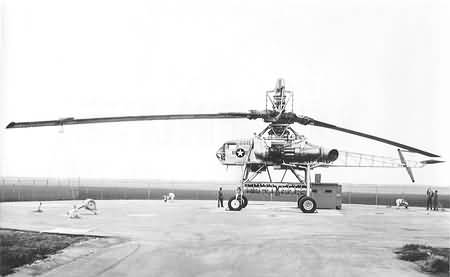|
|
||
|
Engines: two GE J35 turbojets
By far the most impressive of all rotor-craft in the early 1950s was
a strange monster designated XH-17. This was planned and taken
through the design process by Kellett, but hardware trials were
transferred to Hughes Aircraft at Culver City. Already the aircraft
firm of billionaire Howard Hughes had a reputation for being quite
undeterred by the most formidable development problems, and certainly
the XH-17 made sense on paper. In any case, it was part-funded by the
USAF. It was a flying crane, the specialized category
pioneered by the German Fa 284 and intended to lift cargo weighing up
to 27,000 lb (12,247 kg) more than ten times as much as any other rotorcraft of
its day. To do so it had a radically new form of lift power. |
||
